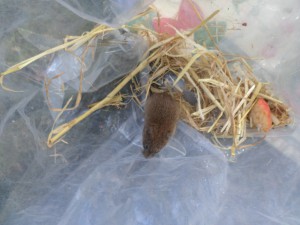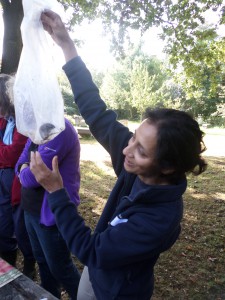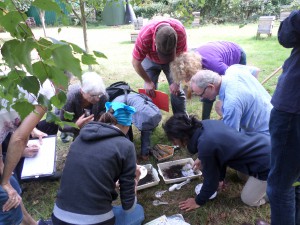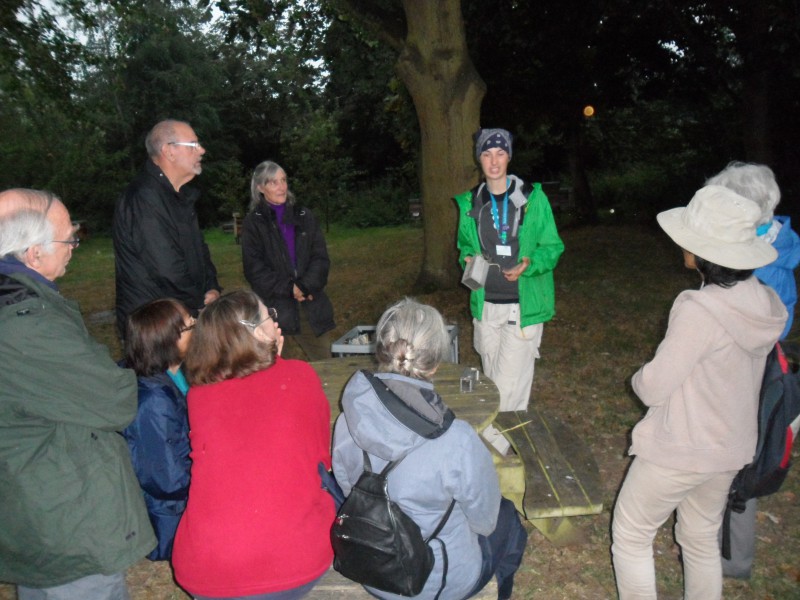My last post described listening for – and watching the bats at the Harrow Beekeepers’ Association apiary, and setting the small mammal traps on the Friday evening. A group of us re-convened on the Saturday, and first task was to collect and open the mammal traps.
Out of 12 traps, we found a number had been sprung, though in several cases the only inhabitants were slugs (it had rained the evening before). However 3 were more productive, each containing a single short-tailed (or bank) vole. Two adults and a juvenile, these little herbivores are among the most common mammals in Europe. All were unharmed by their overnight adventure and were let go to scamper off into the grass around the apiary.
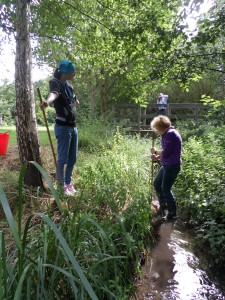 After a tea-break mid-morning, our bat guide from the previous evening led us in a river-dipping exercise. Some of the HBKA members were surprisingly keen to get the wellies on and poke about in the River Pinn (which runs right through the apiary). Examination of the results indicated the river was surprisingly healthy and had a rich abundance of wildlife. Observations of the river have shown that it periodically gets polluted, but at least on this occasion it was supporting a lot of life. This included lots of freshwater shrimps, cadis flies, water hoglouse, mayfly larvae, leeches and quite a few small stickleback fish.
After a tea-break mid-morning, our bat guide from the previous evening led us in a river-dipping exercise. Some of the HBKA members were surprisingly keen to get the wellies on and poke about in the River Pinn (which runs right through the apiary). Examination of the results indicated the river was surprisingly healthy and had a rich abundance of wildlife. Observations of the river have shown that it periodically gets polluted, but at least on this occasion it was supporting a lot of life. This included lots of freshwater shrimps, cadis flies, water hoglouse, mayfly larvae, leeches and quite a few small stickleback fish.
Other finds included a wide variety of slugs, but including the carnivorous Leopard slug (Limax maximus) – a gardener’s friend, this one, as it eats other slugs! Spotted flying over the apiary, along with the expected pigeons, magpies and blackbirds, were a couple of ring-necked parakeets (Psittacula krameri). First recorded in the UK in 1855, these exotic birds (presumably descended from escaped pets) are becoming more common across the south-east and are commonly seen around Harrow.
We wound up the morning around 12:30 as planned. We’d found a rich and seemingly healthy habitat in the apiary, with a few surprises thrown in. In due course we’ll be publishing a full list of species identified, and there’s always scope for follow-up in the form of another bio-blitz or a more detailed and thorough survey. It seems everyone enjoyed the event and hopefully we all learned a little too. Many thanks to all who came and participated, and especially to Rowena for organising loan of traps, bat detector, nets and other paraphernalia, and for her help in identifying and understanding our finds!
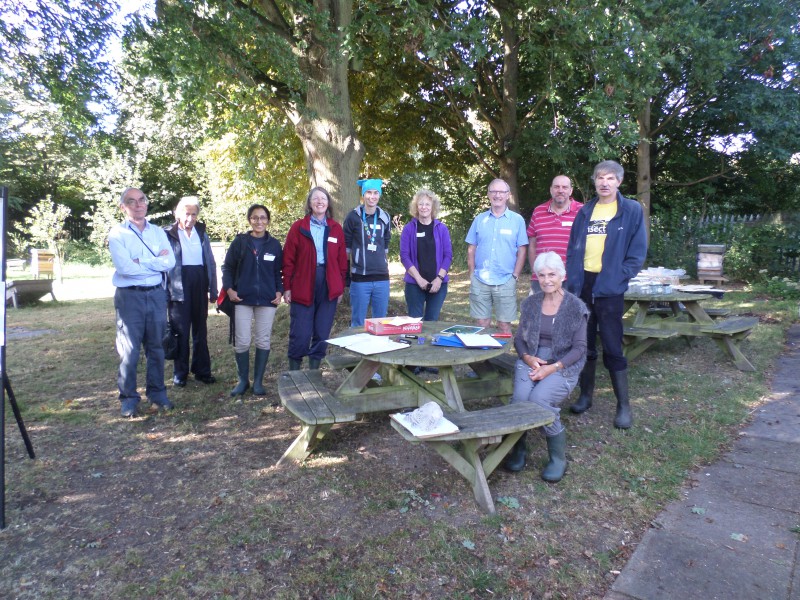
Thanks everyone!

